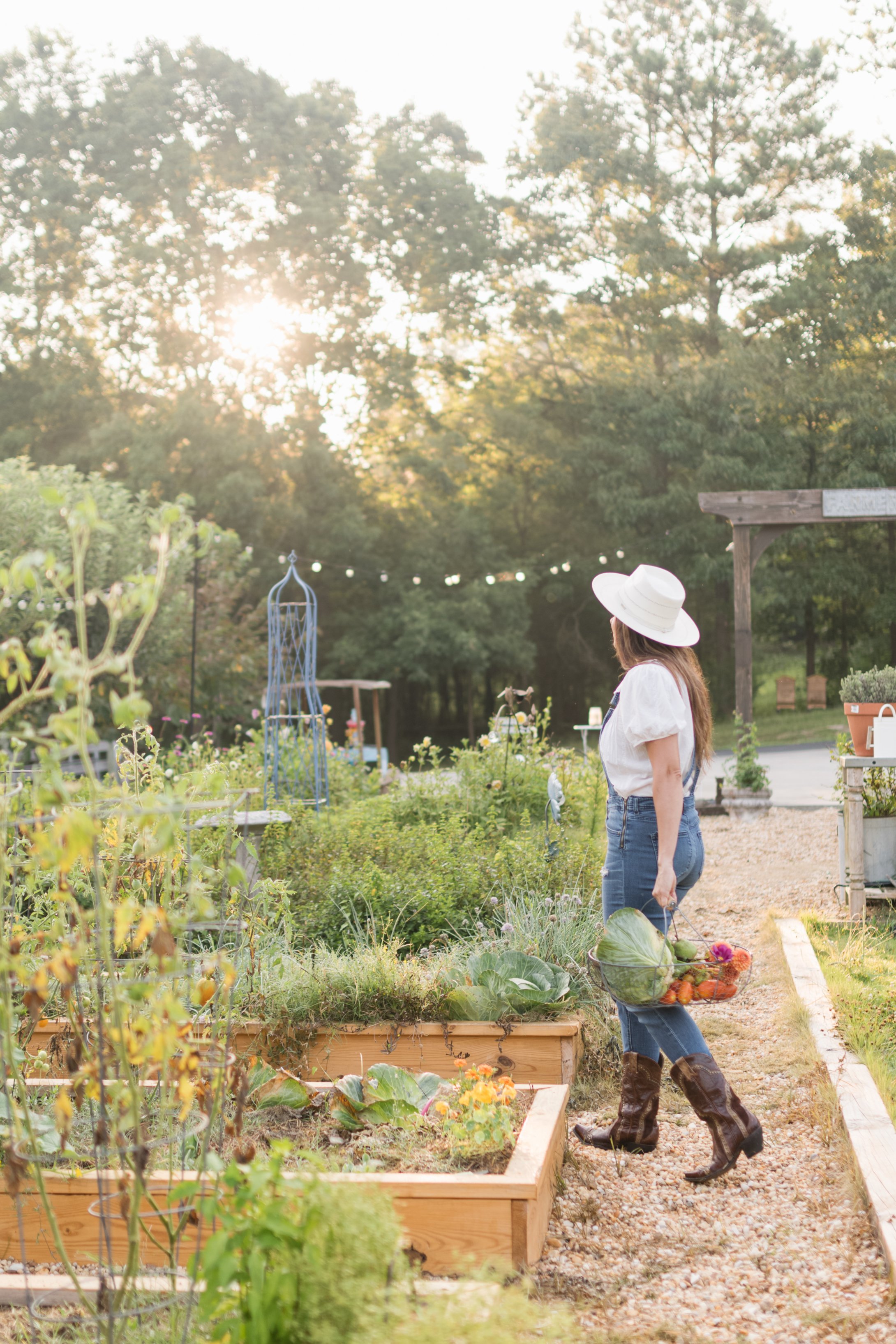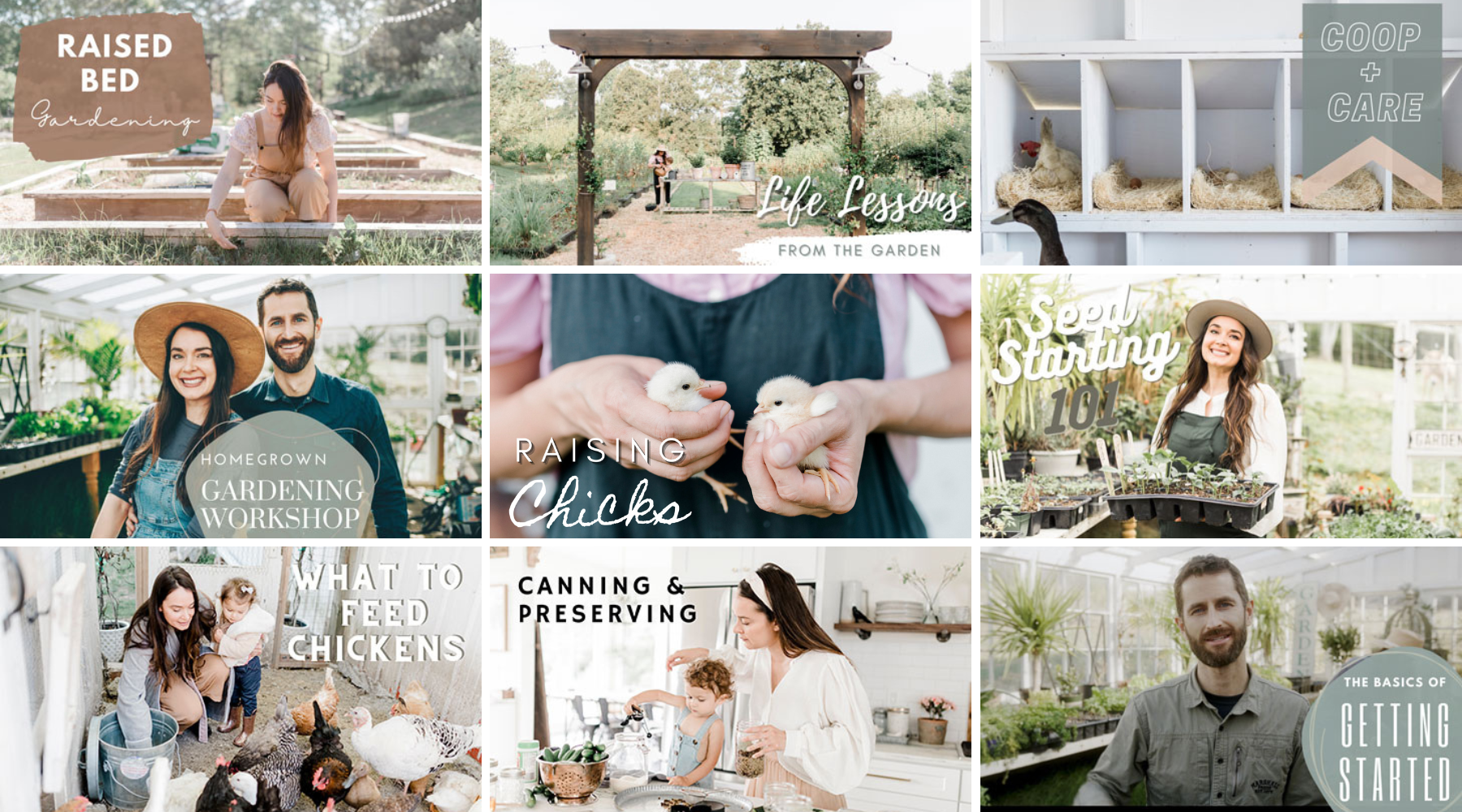Homesteading For Beginners - Three Principles To Get You Started
Jared and I have longed for country living and the homesteading lifestyle for many years. We believed (and still do) there is no greater joy than living the simple, slow life out in the country and learning the essence of life from plants and animals.
But, over the years, we have realized "homesteading" is not just about tending to animals and growing vegetables; there is so much more to it.
Homesteading is a way of life, no matter where you live.
When you remove the clutter, let nothing go to waste, live intentionally, slow down, and become more independent, you are a homesteader! No matter in which way or where you choose to do it. It can be as simple as growing herbs on a window sill and will differ for every individual or household.
Continue reading to discover the three principles we believe will make homesteading for beginners easier and get you off to a great start!
Homesteading for beginners: 3 principles to get you started
We can write an entire book when it comes to practical tips and advice for beginner homesteaders. There are simply too many topics to cover in one blog post.
But before you dive deep into the practical side of things, we believe there are three core principles or starting points that will make homesteading for beginners much easier:
Know your WHY and your END GOAL
Planning and visualizing
Taking it slow and starting small
These three principles or starting points will help you make this magnificent journey as successful and fulfilling as possible and get you off to a great start!
1. KNOW YOUR WHY AND END GOAL
Everyone has their reason.
We are passionate that the most important thing is that you have a written, clearly defined reason for wanting to move to the countryside.
It was important for us to be in a peaceful place, grow our own food, feel like the king and queen of our domain, and find joy and recreation in our backyard. We wanted to pursue a life where less is more and embrace nature's blessings.
What is your 'why' for homesteading? What are your long-term goals?
Is your goal to eat from your garden? Knowing your produce is as fresh and healthy as possible and avoiding all nasty pesticides used in commercial farming.
Do you want to raise animals? Either to make some extra money, provide compost, or simply enjoy the company of an animal friend? BTW, we are strictly plant-based, so our animals serve many other purposes on our farm.
Are you trying to get off the grid and be more self-sufficient? All the uncertainty in the world, lurking food shortages, and increasing living expenses may drive you to be less dependent on society.
Do you want to earn an income from your homestead? When you commit full-time, you can generate a decent income from your farm.
Are you simply longing to return to the basics and enjoy a less complicated, less consumeristic life? To experience more peace and inner fulfillment?
Determining your 'why' will help with all aspects, including your initial planning stages, decision-making processes, and everyday operations or actions.
Sometimes homesteading or self-sufficient living can be challenging and put you out of your comfort zone. Your 'why' will help you push through these tough times and remind you why you wanted to make the change.
2. Visualizing and planning
Don't limit your dreams by any constraints at first. What would you want to do if money and space were no object?
What would it look like if you could have the ideal setup with everything you could imagine or your heart desires - animals, bees, compost piles, gardens, etc?
Write or even sketch everything down to the last detail! Visualize it all!
Next, it is time to plan how you will execute it.
Often times our impatience gets the best of us and we want to do everything NOW! But you need to take the time to carefully plan all that you want to do.
What you want to avoid is to start doing things on your new farm or yard and then realize you made a mistake - you should have planned better, you are running out of room, it's costing a lot of money, you don't have time, etc.
Do your research:
Talk to the locals and neighbors.
Get area information from your local agricultural office.
Have a chat with the local vet.
Read up as much as possible about the topics you are interested in.
Know your growing zone and climate. This will be essential for deciding which animals to keep and which vegetables and fruits to plant.
Find out about any permits you would need.
Plan your steps going forward:
Start with setting mini goals and arrange them according to importance and priority.
What do you have the capacity for considering resources, time, and finances?
Do an extensive budget and costing plan of all significant initial setup and running costs. This includes your home, electricity, waterlines to the animals, shelter for animals, barns and storage areas, fencing, livestock and plants, feed, and so much more.
Find your ideal property if you haven't yet. Or prepare the garden bed or chicken pen in your backyard. The good news is you can make any property work with enough planning.
Which veggies do you want to grow or animals do you want to keep?
How will you care for/ attend to your animals or your home garden?
Do a soil analysis of where you intend to put your garden.
Source where and how to order garden seeds or livestock.
These are just a few ideas to get you going! Depending on the scale of your homesteading or self-sufficiency dream, you will need to determine just a few logistics or write a whole book!
3. Take it slow and start small
Don't put yourself under too much pressure and bite off more than you can chew. Homesteading takes a lot of commitment and patience.
You want to enjoy the journey and ease into it. When you take on too much too soon, you may face failure, feel defeated, give up on your dream, or make costly mistakes.
So take it slow, and start small. We have found that we made better choices when we first “lived” in the current situation to determine what works, what does not, and what needs to be done.
So before jumping in, consider the following:
Look at the sun - does it kiss all the ground where you hope to have a garden?
Which room in your home gets the most sun for your indoor garden?
Where will a compost pile work?
How does the water drain in a big rainstorm?
Where do you want to put your orchard?
Where would animals have space to free range and be safe?
Do you want to mow the grass?
How close do you want your animals...gardens...orchard to your home?
How will you apply pasture and crop rotation?
Start with one project at a time, whether it's a compost pile, building raised garden beds, setting up a barn, or getting the chicken coop ready.
If the above does not apply to you and you simply want to make small changes and live more self-sufficiently, taking small steps toward a less consumer-driven life is already a great start.
Choose one or two self-sufficient activities you are most interested in and focus on perfecting them.
This can be canning food, growing herbs, fermenting, spending more time outside and using less technology, or making compost.
Learn one skill connected to your chosen activity above and grow from there. I.e., choose to learn all about growing tomatoes and then add another veggie. Or learn how to do basic sewing and then only start making your clothes. Take it one step at a time.
Don't overwhelm yourself. Focus all your energy on getting one or two things right, and then you can expand as you get more experienced.
Homesteading is for everyone
We want to emphasize that you don't need tons of land and can do a lot on just an acre or even in the city.
The biggest misconception is that you have to start big or have a lot of space right from the start, which is not true.
You can create your country-living, homesteading, or self-sufficient dream no matter where you live!
Whatever homesteading, country living, or self-sufficiency means to you, if you are a beginner homesteader, these three starting points will guide you in the beginning and along the journey.
Also, remember to be patient and give yourself grace. It does not happen overnight. Just keep trying and push through; you will eventually get into the rhythm of the slow, simple, homesteading life!
homesteading for beginners: resources
We love to help you along this journey and want to provide you with as many resources as possible.
Have a look at these blogs below; they will definitely help:
How to care for chickens - A basic beginners guide on all you need to know
A beginner’s guide to caring for donkeys
All your gardening questions answered!
20 Ways to experience country living no matter where you live
How to can food in 10 easy steps
These are only some of the many blogs on my website to help you. Have a look HERE for more homesteading guidance!
Besides my blog, we also created a membership community for like-minded individuals: HOMEGROWN
HOMEGROWN COMMUNITY
Want to learn more about homesteading? Then our HomeGrown platform may just be what you need!
There’s nothing like the excitement of learning a new thing - how to garden, how to make delicious recipes from your garden, or how to care for baby chicks.
But the truth is that without understanding the basics, these fun experiences can become a headache. Bugs eat your tomatoes before you do. Recipes don’t taste like you hoped. Those chicks get sick or worse, don’t make it.
We have been creating and curating content from people just like you who have already lived and learned, and we are excited to share with you the steps we took to find success so you don’t have to repeat the same mistakes we have made.
From food to farm to family and so much more, we find ways to share tried and tested ideas in your own kitchen, garden, farm, and home.
A growing library of over 100 videos
Watch and enjoy on any device
Connect with a community of lifelong learners
Access to on-demand workshops and step-by-step tutorials
Fun Instruction for Rookies or Rockstars
Curated courses & world-class instruction
Affordable subscriptions with no surprise extra costs
Special subscriber offers & personal support for your country living questions
HomeGrown is here not just to teach you what to do but how to do it too. Oh…and we have some fun along the way.
For a small fee of $5.99/month or $49 for the year, you have years of experience, trial and error, and knowledge right at your fingertips.










